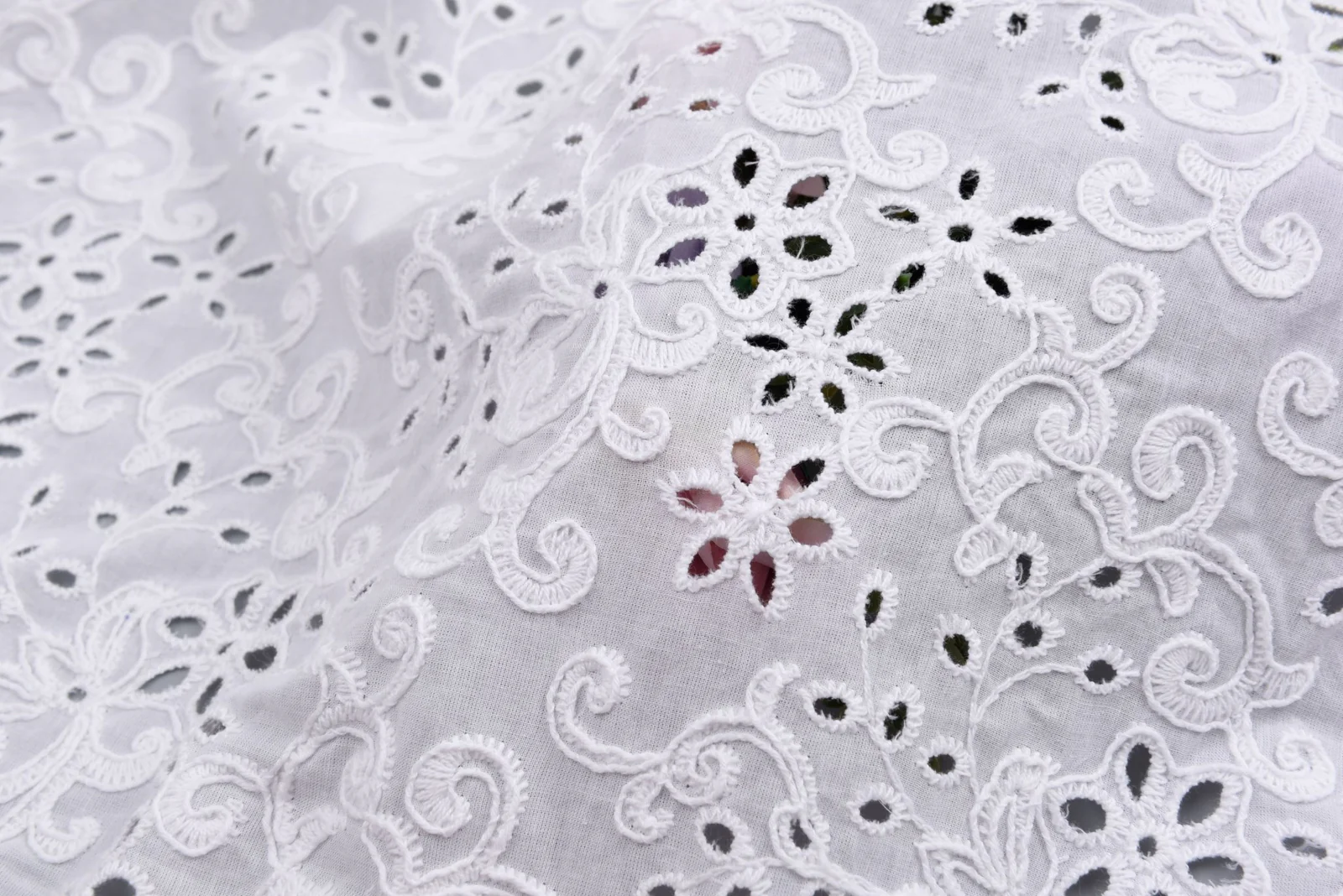Exploring Cotton Embroidery Fabric: Types, Uses, and Care Tips
Cotton embroidery fabric has been cherished for centuries as a versatile and beautiful base for needlework. Whether you are a seasoned textile artist or just beginning your journey with embroidery, understanding this fabric’s qualities can help you create stunning pieces that stand the test of time. From lightweight voile to heavier canvas, cotton provides an excellent surface for intricate stitches, vibrant threads, and creative expression. This article will explore the different types of cotton embroidery fabric, its common uses, and how to care for it properly.
What Is Cotton Embroidery Fabric?
Cotton embroidery fabric is any woven cotton material specifically chosen for embroidery projects. Unlike synthetic alternatives, cotton offers a soft, breathable, and natural feel that enhances both the stitching experience and the finished piece’s appearance. The weave density, texture, and weight can vary, allowing artists and hobbyists to select the most suitable option for their designs.
Many professionals and hobbyists rely on specialized suppliers to source quality materials. If you are looking for a reliable selection of cotton options, you can explore a variety of choices on Cotton Embroidery Fabric, where you will find numerous types and styles to suit different creative needs.
Types of Cotton Embroidery Fabric
There are several varieties of cotton embroidery fabric, each suited for particular techniques and projects. Here are some of the most popular types:
- Muslin: A lightweight and affordable plain weave cotton, muslin is perfect for practice projects and for transferring designs before stitching on finer fabrics.
- Cotton Voile: Sheer and delicate, cotton voile is ideal for airy designs such as handkerchiefs or decorative panels.
- Cotton Poplin: With a smooth surface and tighter weave, poplin holds stitches well and is frequently used for table linens and apparel embroidery.
- Cotton Twill: Recognizable by its diagonal rib pattern, cotton twill is more durable and suited for heavier, more textured embroidery.
- Cotton Canvas: A sturdy and thick option, canvas is commonly used for wall hangings, tote bags, and upholstery projects.
- Aida Cotton: Known for its square weave, Aida is specifically manufactured for cross-stitch embroidery and is available in different counts (number of squares per inch).
Each type of cotton fabric has unique properties, so it’s important to consider the end use and the embroidery method before making a selection.
Common Uses for Cotton Embroidery Fabric
Cotton embroidery fabric can be adapted to many applications across both decorative and functional items. Some common uses include:
- Home Decor: Cushion covers, wall art, table runners, and curtains often feature intricate embroidery on cotton bases.
- Garments: Blouses, dresses, and children’s clothing are frequently embellished with embroidered designs on cotton fabric for a soft, comfortable finish.
- Accessories: Tote bags, pouches, and scarves gain a personal touch with custom embroidery.
- Craft Projects: Many crafters create ornaments, bookmarks, and other small items using cotton fabric as a foundation.
The versatility of cotton makes it a favorite for both traditional and modern embroidery techniques.
Tips for Caring for Cotton Embroidery Fabric
Proper care is essential to maintain the beauty and longevity of embroidered cotton pieces. Here are some helpful tips:
- Pre-Wash the Fabric: Cotton tends to shrink when washed, so it’s advisable to pre-wash and iron the fabric before starting your embroidery to prevent distortion later.
- Gentle Cleaning: Hand wash embroidered items in cool water with mild detergent. Avoid using bleach or harsh chemicals that can damage the threads and fibers.
- Dry Flat: To retain the fabric’s shape, lay it flat to dry rather than hanging it, which can cause stretching.
- Iron Carefully: Press the fabric on the reverse side with a warm iron to avoid crushing the stitches. Place a pressing cloth between the iron and embroidery for extra protection.
- Storage: Store finished projects in a clean, dry place away from direct sunlight to prevent fading and deterioration.
Conclusion
Cotton embroidery fabric continues to inspire crafters and artisans with its softness, durability, and adaptability. Whether you are designing a delicate cross-stitch sampler or embellishing home textiles, the right cotton fabric can elevate your work and bring your creative vision to life. By understanding the types available, choosing the best fabric for your project, and caring for your finished pieces, you will enjoy the rewards of beautiful and lasting embroidery.







